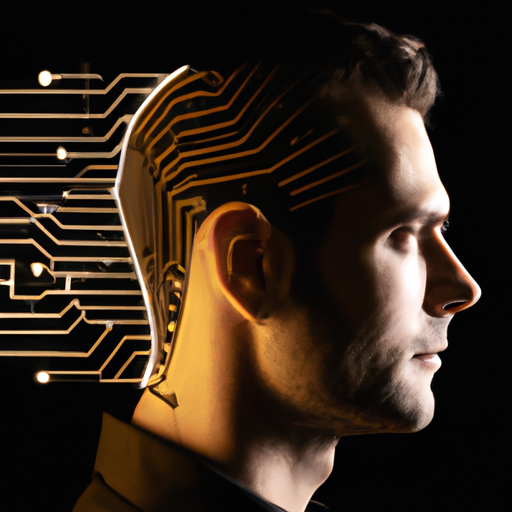In an ever-evolving digital landscape, understanding the intricate dance of logic and its role in shaping artificial intelligence (AI) and machine learning (ML) has never been more critical. This article explores how the concept of a chain-of-thought (COT), a logical sequence of actions or processes, can be harnessed to fine-tune and enhance the capabilities of learning logic machines (LLM).
Our journey begins by delving into the power of COT in AI and ML fine-tuning, a process that carries the potential to revolutionize not just how our machines learn, but how they interact with the world. We then examine how COT serves as the key to building more robust and intelligent digital twins, shedding light on the symbiotic relationship between logic and intelligence in a digital environment.
Lastly, we transcend traditional perspectives on intelligence, exploring how logic plays an indispensable role in amplifying AI performance. Through this exploration, we aim to provide a comprehensive understanding of how the logical sequence of thoughts, actions, and processes can reshape the world of AI and ML.
Join us as we explore this fascinating interplay of logic, chain-of-thought, and digital intelligence, stepping into a future where our machines don't just learn – they think.
1. "Harnessing the Power of Chain-of-Thought in AI and ML Fine-Tuning"
In the dynamic world of AI (Artificial Intelligence) and ML (Machine Learning), the concept of 'chain-of-thought' (CoT) is gaining considerable recognition. This concept, a logical sequence of actions, is proving to be a valuable tool in enhancing the capabilities of AI and ML models through fine-tuning.
Embracing the CoT approach, we can capture the logic behind processes, procedures, texts, principles, and actions in a structured, sequential manner. This representation of thought and reasoning allows for the fine-tuning of AI and ML models, bridging the gap between raw data and meaningful insights.
CoT's power in fine-tuning AI and ML models can be seen in several applications. One such application is the development of digital twins, virtual replicas of physical systems that enable real-time monitoring and manipulation. By incorporating CoT into these digital twins, we can enhance their predictive capabilities, allowing for more accurate simulations and forecasts.
The integration of CoT into AI and ML systems also enhances the intelligence of these models. With the ability to follow logical sequences and reasoning, these refined models can make more sophisticated decisions, often surpassing
2. "COT: The Key to Building More Capable Digital Twins"
In an era where digital twins are revolutionizing our understanding of complex systems, the concept of Chain of Thought (COT) emerges as a vital tool in building more capable and intelligent models. The evolution of AI and ML technologies has brought us to a point where our digital counterparts can mimic and predict real-world scenarios with astonishing accuracy. Yet, the true potential of these digital twins lies in their ability to encapsulate and emulate our logical sequence of actions or, in other words, our chain of thought.
COT plays a pivotal role in enhancing the capabilities of digital twins by providing a blueprint of human thought patterns. It's like embedding a cognitive map into our digital counterparts, enabling them to reason, learn, and evolve in a manner akin to human intelligence.
In the grand scheme of AI and ML technologies, COT is the master key to unlocking sophisticated levels of analytical capabilities. By engraining a logical sequence of actions into the AI, we're stepping beyond the realm of programmed responses and into an era of autonomous decision-making models.
The fine-tuning of digital twins with COT enables them to learn, adapt, and respond to dynamic situations in a
3. "Transcending Traditional Intelligence: The Role of Logic in Enhancing AI Performance"
The world of artificial intelligence (AI) and machine learning (ML) has seen exponential growth over the past few decades. This growth has been fueled by an unquenchable thirst for innovation and the relentless pursuit of transcending the boundaries of traditional intelligence.
The role of logic cannot be understated in this endeavor. Logic provides a systematic structure for thought, a chain-of-thought, if you will. It allows us to encapsulate complex processes, procedures, texts, principles, and actions into a format that AI and ML models can understand and learn from. This process of encapsulation is similar to the way humans form concepts and understand the world. It is the equivalent of providing these models with a cognitive map, a 'cot', to navigate the world of information.
Fine-tuning AI and ML models using logic can significantly enhance their performance. It allows these models to make sense of the vast amounts of data they are exposed to, extracting meaningful patterns and relationships. More importantly, it enables them to make logical inferences and predictions, pushing them closer to the realm of human-like intelligence.
The concept of digital twins is a prime example of this. Digital
In the final analysis, the role of logic in the realm of AI and ML is nothing short of transformational. The chain-of-thought (COT) approach not only enhances the capabilities of these technologies but also transcends the traditional bounds of intelligence. By encapsulating the logic of a process, procedure, or principle, we can turn the raw power of AI and ML into refined, fine-tuned tools, capable of delivering more accurate and reliable outcomes.
The concept of digital twins, for instance, has seen a significant upgrade through the application of COT. They have evolved into more capable models, mirroring complex systems with greater precision than ever before. Their performance has been considerably bolstered by the fine-tuning process, proving the immense value of COT in the AI and ML ecosystem.
The marriage of logic and AI is a powerful testament to the evolution of technology. As we continue to unravel the potential of COT, we're not only enhancing the performance of AI and ML but also redefining the boundaries of artificial intelligence itself. The road ahead is filled with possibilities and, with continued exploration and fine-tuning, we can expect to see even more remarkable advancements in this exciting field.
